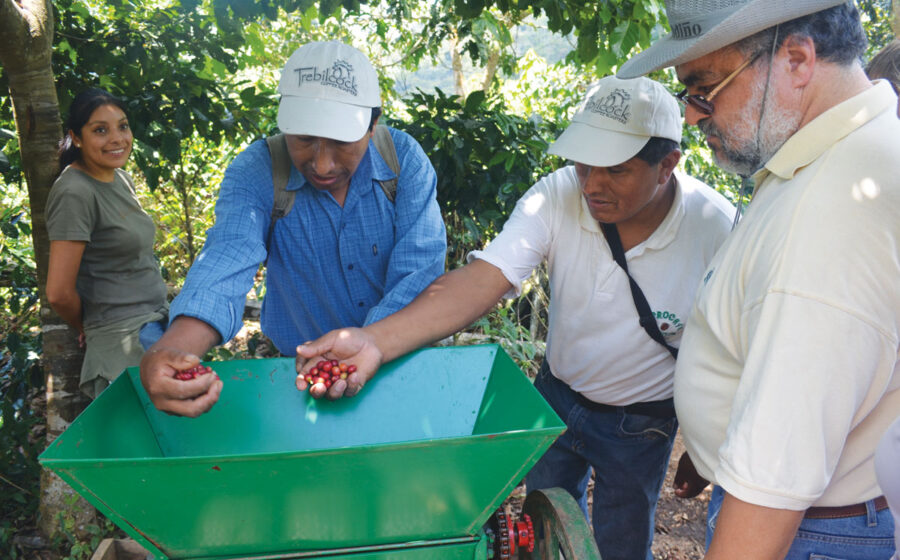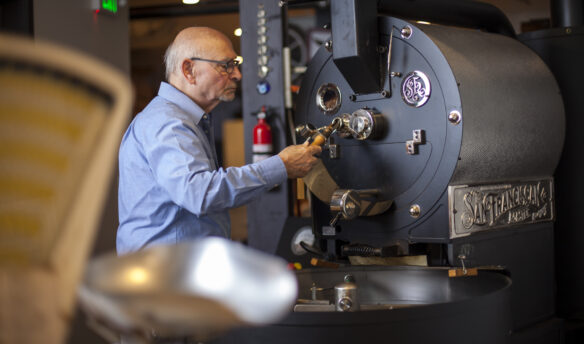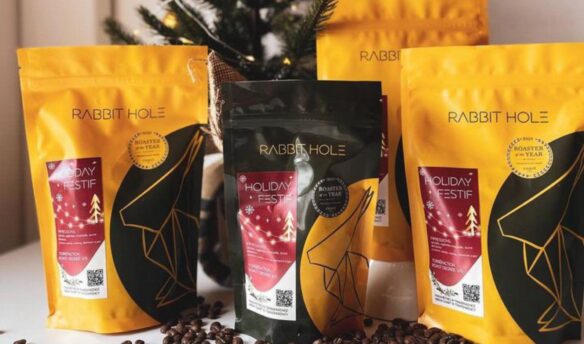[F]or many independent coffee roasters, the principles of direct trade match those that inspired them to go into roasting: passion for the search of excellent coffee, appreciation of the many steps and people involved in the bean’s journey from farm to cup, and a desire to support social development and environmental stewardship along the entire coffee chain. Roasting and serving superior coffee that you’ve selected yourself and purchased directly from a farmer is the ideal sourcing model for many roasters.
It can be ideal to have loyal buyers who purchase regularly and provide detailed, useful feedback (not to mention a human connection).
It’s more and more common for consumers to look for and enjoy the opportunity to drink coffee traced to a particular person and place, similar to the produce they buy at a farmers’ market. And for coffee producers it can be ideal to have loyal buyers who purchase regularly and provide detailed, useful feedback (not to mention a human connection) amid the web of otherwise anonymous prices and numbers that is the international coffee market.
Even with these benefits for growers, roasters, cafés, and consumers, in practice direct trade is challenging and often not feasible.
Our export-import business, Invalsa Coffee, and our micro-roastery, Valverde Coffee Roasters, are co-based in Boston and Nelson Valverde’s hometown of La Paz, Bolivia. Nelson’s brother Jorge, our co-founder, manages our export business in La Paz. Through him we are able to source and export Bolivian micro-lot coffee, including to ourselves as an importer in the US. We also bring in coffees from other countries, mostly in South America, through direct producer relationships we’ve cultivated while participating as judges and organizers in nearly a dozen Cup of Excellence and other origin competitions. We have learned a lot about the joys, opportunities, and challenges of direct trade through our business and our customers.
Logistically, direct trade works best for roasters large enough to employ buyers who travel the world to seek out new direct-trade partnerships and maintain existing ones. Even more important, direct-trade roasters must be able to commit to purchasing enough coffee (fifteen to twenty bags minimum) to make it worth a producer’s time.
For even the most successful direct-trade roasters, consistent quality is a goal that requires much more attention and commitment than a once-a-year, weeklong visit to check in and take great photos.
Though a reliable buyer raises a grower’s incentive to improve their coffee, it does not mean the grower receives the ongoing technical assistance and support required to ensure consistent quality in the face of changing production and market conditions. When a direct-trade buyer receives coffee that’s not as good as last year, she faces a dilemma. Finding ways to maintain and support quality at the farm is one of the trickiest aspects of direct trade, with each grower facing her own challenges. Working with a direct trade partner requires regular contact and support from the buying partner.
Direct trade is most challenging for small- to medium-sized roasters that don’t have a large travel budget (if they have one at all) and aren’t bilingual. Roasters in this position who attempt their own origin trip often talk only with exporters who speak English and end up buying whatever those exporters have in stock. Though roasters may label this direct trade, often they never visited with the farmer and her family. There’s little difference between this model and buying beans from a transparent importer with its own direct-trade relationships.
There are ways for smaller roasters to have a better direct-trade experience, including participating in specialized origin trips such as Cup of Excellence.
There are ways for smaller roasters to have a better direct-trade experience, including participating in specialized origin trips such as Cup of Excellence and local origin competitions. These not only rank and highlight excellent coffees, but also connect producers directly with buyers. However, such coffees are by nature limited in availability, and their cost, while great for the growers, may place them out of reach for smaller and newer roasters. That said, some roasters find success transitioning a producer relationship that began through a competition purchase into one that lasts for years to come.
Though we’re of course biased towards our own model, we believe the most promising way for smaller roasters to establish connections between their businesses and coffee farmers is to work with exporters and importers who specialize in “storied” micro-lots and identifiable coffees, while maintaining transparency and honesty about the roaster’s real involvement in sourcing the coffee. Specialized traders like this serve as the sole middleman between producers and roasters. Very importantly, because of their stable presence, they serve as a channel to support quality-focused technical assistance to farmers.
There remain very significant challenges to increase direct-trade in the coffee industry. With the increase in technology-driven transparency in the sourcing and operations of all coffee businesses, we believe that widespread consumer interest in the stories of their coffee will continue to enable roasters, producers, and traders to incorporate personal connections and direct relationships into their business’s missions.
—Christina and Nelson Valverde work at family-owned Invalsa, an importer-exporter of coffee and cacao.
















